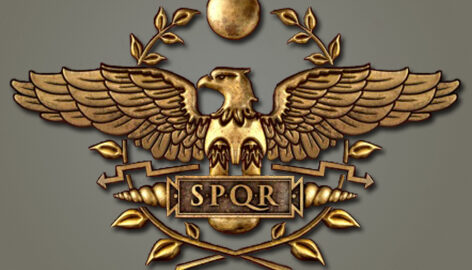

The period of Republican in Rome saw the development in its monetary system later than the other empires around it. Before the introduction of coinage, Rome consists of two important forms of value in its economy Aes rude-an an irregular shaped piece of bronze and Aes signatum- cast flat bar made of bronze that needed to be weight in each transaction. Later on, heavy cast Bronze Roman coins called Aes Grave were introduced. The standard coin of the old Roman coins consist of AS and it was also the monetary unit. The start of the second Punic war also saw the introduction of the various small denomination like Unica, Semuncia, semis, Dupondius, Triens, sextans, quadrans, etc which were struck not cast also known as the early struck Roman Republican coinage.
Roman Republican Early Coinage
The other neighbours of the Roman Republican had a good and advanced coinage like Greece so it didn’t surprise anyone when the coin similar to the Greek coinage was found in the Roman Republic coins. These types of silver coins were known as didrachm. Ancient Roman Republican coinage consists of denominations in gold, silver and bronze metal which were cast coins.
The early coins of roman coinage consisted Aes Grave, Aes Rude Aes Signatum, As, Decussis, Dodrans, Dupondius, Triens, quadrans, Semis, Sextans coins, Teraunica, Tressis and Unica.
The most common feature on the old Roman republic coinage was the Janus bust on the obverse side and the ship Row on the reverse side of the coin. Many designs differ, there were also many small symbols of flies or donkeys which were connected to anonymous moneyers. Few of the sextan roman coinage have some distinguishing feature with Quandrans roman coins.
Roman republican Pre-Denarius Coinage
More advance than the old Roman coins or early roman coins. The denomination of this coinage As continued from old roman coinage, silver didrachm, half Litra, Half Quadrigatus, Half Quatunica, half Stater, Quadrigatus, Quartunica, Semis, Semiunica and Stater. The AS coin of this coinage was the struck coinage
These coins are minted in silver, gold and bronze. The majority of the coins of this period were dir-struck coins. The silver didrachm of this coinage depicted the laureate head of Discouri on the obverse and Goddess Victoria on the reverse side. In few cases, in the reverse, the She-wolf with the twins Remus and Romulus are shown.
Roman Republican Denarius coinage
The denarius coinage part of Roman Republican Coinage was mostly minted in silver, bronze and gold. The quality of the metals varied in different periods. The denomination in the denarius coinage were gold 20,40,60 AS with silver Quinarius, semis, sesterius and Victories. The gold As depicts the famous Roman Legion Symbol and the symbol of Jupiter Aquila or Eagle in reverse with Bust of Mars on the Obverse side.
The roman silver coin Quinarius coin depicts goddess Roma’s bust in few cases Apollo bust on the obverse side. The reverse of the twin gods Dioscuri galloping on the horse with legend ‘Roma’ in the exergue. Other denominations also have similar features that were circulated in Roman Republican Coinage. Denarius coinage continued in the Julius Caesar denarius coins and Augustus denarius coins.
Later On, the Roman Republican coinage introduced its own monetary system called denarius as its monetary unit. All the Roman era coins were minted by the moneyer’s under the order of the senate but the early coin due to lack of data regarding the minting authority comes under anonymous issue. The last phase of the Roman republic saw the coins issued by the moneyer with their initial. They also issued coins consist names of people from powerful political families. This coinage also consists of provincial and wartime issues.
If you want to know more about the aspects of Roman coins please refer to the goddess on Roman Coins and Animals on Roman coins
The Mintage World Team comprises of experts, researchers and writers from the field of Philately, Notaphily and Numismatics who try to shed light on some of the most interesting aspects of coins, banknotes and stamps from not just India but across the globe as well.